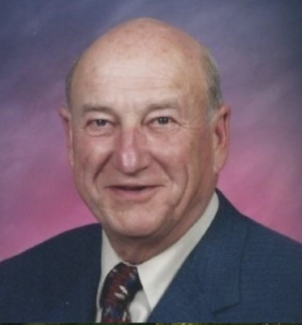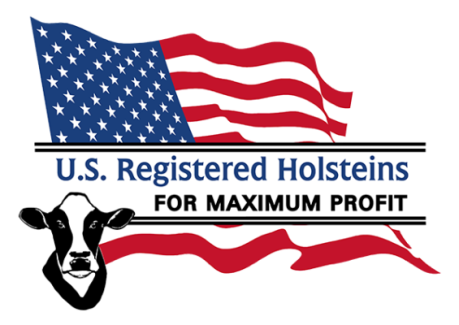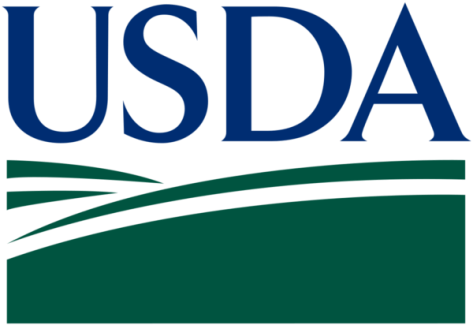The first in a series looking back at purebred dairy production champions that helped shape the early days of their breeds in North America. This article is featured in our Spring 2021 issue written by E.Y. Morwick.
Alexander Graham Bell’s invention of the telephone, Dr. Frederick Banting’s discovery of insulin, and Babe Ruth’s sixtieth home run – these are some of the accomplishments, some of the human attainments, that marked our progress as a society. They are monuments in time, the milestones that fix our place in the past.
“What year did you get married?” a son asks his father, who happens to be a Holstein man. “It was 1960,” the father replies, “the same year Princess Breezewood Rag Apple Patsy made her 1,800 pounds of fat.”
Webster’s Dictionary defines “epoch” as “the beginning of a new and important period.” In this essay we discuss the production records that defined an era in both the United States and Canada. We throw in a few Scottish and English records for good measure.
From the earliest days of the dairy breeds on this continent, milk production has been the key factor of growth and expansion. Dairy breed improvement, insofar as it related to the production of milk and butterfat, was not only rapid, it was exciting, dramatic and consequential. The stories that follow, portraits of animals and the men who owned them, will bear this out.
We have not gone back to the days of the seven and thirty-day tests even though those were the gauges of bovine excellence from 1894 until they were dropped in 1932. While the short-term tests performed a useful service, their basic shortcomings were their susceptibility to unethical treatment and manipulation caused, one supposes, by an over abundance of competitive spirit. These were some of the factors that caused the short-term tests to lose significance. It was not until 1928 that the number of yearly records exceeded the seven-day tests in any one year and from then on it was a different horse race.
So while you will not find references to the glory days of the short-term tests – no mention will be made of DeKol 2d or Netherland Hengerveld, two of the cows who hoisted the trophies in the breed’s first days, you will note that some of those seven-day champions went on to a higher plateau in yearly testing. Colantha 4th’s Johanna, the first 35-lb. cow, in 1907 completed her full year’s work with 998 lbs. fat, a world’s championship record; and then in 1912 Pontiac Clothilde DeKol 2d finished her 37-lb. butter record and went on to become the first cow of any breed to produce 1,000 pounds fat on yearly test.
So let us begin.
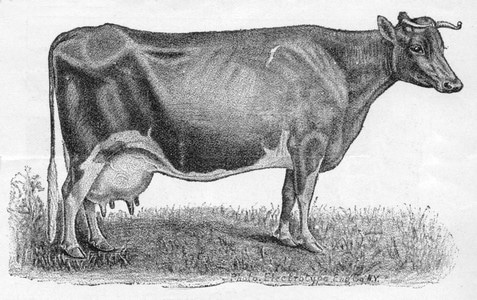
1. Echo 121 H.H.B.
In 1884 Echo, a cow bred by Gerrit Miller but owned and tested by Frederick C. Stevens, made a yearly record of 18,120 lbs. milk and calving within a short time made another record the succeeding year of 23,775 lbs. milk, the first record above 20,000 lbs. for any breed.
She was an animal of significant influence, whenever the word “Echo” appeared in an animal’s name, one could be sure that the reference was to this cow. May Echo, who established her famous family in the herd of Burnham Mallory, Frankford, Ont., was granddam of May Echo Sylvia, who would become the new production champion in 1916. May Echo traced to Echo through Count Echo DeKol, her sire and she and her family took their names from this foundation dam.
May Echo Champion, Sylvia’s full brother, was the sire of Agassiz Segis May Echo, world’s champion fat producer in 1922 on production of 1,345 lbs. fat (1,600 lbs. butter) from 30,886 lbs. milk, 4.35%.
2. Clothilde
In a record she started in 1885, Clothilde exceeded Echo’s record by more than 2,000 pounds, producing 26,021 lbs. milk in 365 days. Noteworthy among the early butter records were those of Clothilde and her daughters. Between 1885 and 1887 Clothilde made a seven-day butter record of 28 lbs. 2 oz.; Clothilde 2nd made 30 lbs. 8 oz. and Clothilde 4th, 22 lbs. 10 oz. as a 3-year-old.
The 1891 catalogue of Smiths & Powell, owners of this family, makes the statement that Clothilde and five of her daughters averaged 16,605 lbs. milk in a year, three of those daughters being tested in 3-year-old form. They claimed that this average for the entire family exceeded any other family in equal numbers for both milk and butter.

Established a new production mark in 1886 with 26,021 lbs. milk on yearly test. Foundation dam of a family of vast influence.
Smiths & Powell’s Lakeside Stock Farm, always an active participant in the short-term tests, in 1887 entered two cows, a dam and daughter, in an interbreed contest sponsored by the National Dairy Show Association, an organization that was supported principally by Jersey and Guernsey breeders. The first show was held at Madison Square Gardens on May 1, 1887. In addition to the usual prizes and classes, two “sweepstakes” prizes were offered, one for the cow of any breed producing the largest quantity of milk during twenty-four consecutive hours, and one for the producer of the greatest quantity of butter during the same time. So sure were the Jersey men of victory in the butter contest that Frederic Bronson, President of the Jersey Club, had arranged beforehand to have a portrait of a Jersey cow engraved on the silver cup to be given to the winner.
Competing against a field of seven Jerseys, two Guernseys and five Holsteins, Clothilde won the contest with a yield of 2 pounds 7.5 oz. Clothilde 4th, her daughter, was second with a yield of 2 pounds ¼ oz. To quell the criticism concerning the quantity of butter made, the New York Dairy Show engaged Dr. S.M. Babcock, at that time chief chemist of the New York Agricultural Experimental Station at Geneva, to analyze the milk from each cow in the competition. Babcock, to the chagrin of the Jersey and Guernsey men, confirmed that Clothilde had indeed yielded more butter than any other cow in the contest.
The prodigious capacity of the Holstein for milk production had been recognized from the start, but to the time of Clothilde’s triumph, the Holsteins potential for butter production had required a more convincing demonstration. Clothilde’s victory was of paramount importance as it focussed attention on the Holstein as a butter-producing breed, placing the black and whites at parity with their coloured sisters.
It was through Clothilde 4th’s Imperial, Clothilde 4th’s son sired by a son of Netherland Prince, that much of the Clothilde influence flows. His sons with the biggest impacts were Aaggie Cornelia 5th’s Clothilde Imperial who in the Gillett herd in Wisconsin sired Colantha 4th, the dam of record-breaking Colantha 4th’s Johanna; and Johanna Rue 2d who was dam of Colantha 4th’s Johanna sire; also Artis Adiantum’s Clothilde whose daughter, Rag Apple’s Clothilde Artis, was dam of Pontiac Clothilde DeKol, in turn the dam of Pontiac Clothilde DeKol 2d, the first cow to produce above 1,000 lbs. fat.
Quite apart from her production merits, Clothilde was early identified as a major source of the recessive red factor gene.
3. Pietertje 2d
After Clothilde’s eye-popping performance, it seemed that the upper limits of milk production by a single cow had been reached. Then along came Pietertje 2d. In 1882 at the age of five years, Pietertje 2d was imported from Holland by Alonzo Bradley, Lee, Massachusetts. Bradley, an active Holstein merchant, was perhaps the most prominent of the early importers not centered in New York State. Following an inspection of numerous Holland dairies and having seen over one thousand cows milked, Bradley selected Pietertje 2d in the herd of her breeder, T.K. Cuperus, Boxum, Friesland. He considered Pietertje 2d the most perfect cow in Holland. Witnessing her dam, Pietertje, producing 93 lbs. of milk in a day, Bradley described her as “a wonderful cow, the milk veins extraordinary in their development”. According to Bradley, the original Pietertje was “an enormous milker, apparently of even greater capacity than her daughter”.
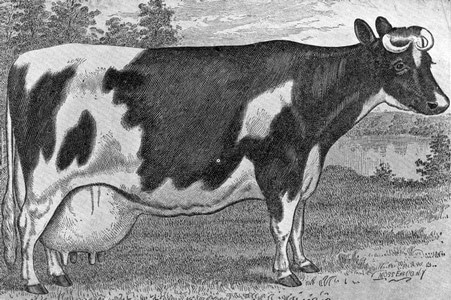
Her record of 30,318 lbs. 8 oz. milk in a year, completed in 1888, was not exceeded until 1914. Foundation dam of the Pietertje family which sprouted countless influential males and females.
Shortly after this importation, Bradley sold Pietertje 2d to a neighbour, Elizur Smith. In 1884 Smith transferred Pietertje 2d, her son and young daughter, to Dallas B. Whipple, a dentist who owned a hobby farm at Cuba, New York. It was under Whipple’s ownership that Pietertje 2d’s world’s record was completed.
In the spring of 1887 Pietertje 2d embarked on a year-long record that closed on February 23, 1888. It totalled 30,318 lbs. 8 oz. milk, a world’s record for milk production. It exceeded Clothilde’s output by more than 4,000 lbs. and as a record for milk production, stood unchallenged until Tilly Alcartra’s production of 30,453 lbs. milk in 1914.
Great precautions had been taken to authenticate the record by the inspection of several prominent people who were called in for the purpose, including a local minister, a justice of the peace, the principal of Limestone Academy and Samuel C. Drew, a Jersey breeder. Based on the credibility of the material put forward, Pietertje 2d’s achievement was credited without question.
Of the thirty or so original Dutch animals which made a lasting impact on the North American breed, Pietertje 2d occupies a unique position by virtue of the breeding record of certain of her male descendants. They were Milla’s Pietertje Netherland, Pontiac Korndyke, Hengerveld DeKol and King Segis. Of prime importance to Canadians is the fact that Johanna Rag Apple Pabst, one of Canada’s most important foundation sires, traced to Pontiac Korndyke six times, four times to Hengerveld DeKol and twice to King Segis. These bulls, all of whom qualify as true breed founders, are all immediate descendants of Pietertje 2d. Among her prominent female descendants were Segis Pietertje Prospect, Carnation’s cornerstone female; May Walker Ollie Homestead who traced to Milla’s Pietertje Netherland 16 times; and Pietertje Maid Ormsby, one of the cornerstone dams of the Ormsby bloodline.

In 1883 she challenged the Holstein, Mercedes, for breed supremacy, but Mercedes came out on top. This was the first great victory of the Holstein breed for butter production in competition with the coloured breeds and had a large bearing on the development on the Holstein industry.
4. Adelaide of St. Lambert
Adelaide of St. Lambert, a Jersey, was directly descended from Sheldon Stephens’ importation to Canada in 1868, the shipment which established the St. Lambert bloodline in America. In the herd of Henry Harrison, Cannington, Ont., Adelaide yielded 82 lbs. of milk in one day which made Messrs. Miller and Sibley, Franklin, Pennsylvania, very eager to buy her. In her new home in the United States, Adelaide, in the record she started in 1880, produced 2,005 lbs. milk in thirty-one days (an average of 65 lbs. per day), which stood as the U.S. benchmark for that period.
5. Mary Ann of St. Lambert
Mary Ann of St. Lambert 9770 A.J.C.C., another high-stepping Jersey who also traced to the Stephens’ importation, spent her best days in the ownership of Vallancy E. Fuller. Mr. Fuller, a lawyer who plied his trade at the City of Hamilton, Province of Ontario, spent much of his time attending to the needs of his Jersey herd, of which he was extraordinarily proud. He kept these creatures on his Oaklands Farm on Burlington Bay.
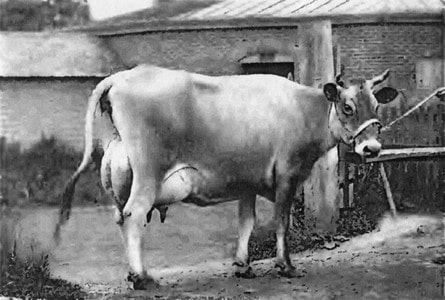
Directly descended from Sheldon Stephens’ importation of 1868, the shipment that introduced the St. Lambert bloodline to the North American continent, she yielded 82 lbs. milk in one day for Henry Harrison, Cannington, Ont. She was sold to Miller & Sibley, Franklin, Pa. Under their ownership she set a U.S. benchmark for that period.
In Fuller’s ownership Mary Ann came into her own, setting seven and 30-day records for the breed and before long was the continent’s most famous Jersey cow. Her owner had this to say:
“Nothing ever upset her… She was easily the Queen of the herd and she seemed to know it. She led all the cows in going to pasture and if any ever tried to pass her, a hint from her horns told the ill-advised one to keep her place. Although I received some very high offers for the animal, she ran with the rest of the herd.”
In the summer of 1882 the Breeder’s Gazette of Chicago offered a silver cup with a value of $50.00 “to the owner of the cow that shall produce the largest yield of butter for 30 consecutive days between the first day of July, 1882 and the first day of July, 1883.” It was in this contest, which took place at a fairgrounds near Chicago, that Mary Ann met her match. Only two cows were entered, Mary Ann and the Holstein, Mercedes, who belonged to Thomas B. Wales, Iowa City, Iowa.
The results of the contest were in dispute from the beginning. The records and accompanying statements were submitted to a committee of three members of the Illinois State Board of Agriculture appointed by the Gazette. This committee awarded the prize to Mercedes for a yield of 99 lbs. 6 oz. of unsalted butter. Mary Ann’s output was 97 lbs. 8 oz. whereupon Fuller issued a $500.00 challenge to Mr. Wales to continue the record for another 30 days. Considerable correspondence reached the public prints but nothing came of the matter. Mary Ann of St. Lambert was, however, continued on test for a full year and made 867 lbs. of butter, which was considered a world’s record for the Jersey breed.
6. Pauline Paul
Her record of 1,153 lbs. butter (922.4 lbs. fat) completed in 1891 stood unchallenged until Colantha 4th’s Johanna took over the butterfat championship in 1907.
Pauline Paul was born in 1882 on the farm of her breeder, Charles Crapser, Cresco, Iowa. In 1883 when the Crapser herd was sold at auction, Pauline Paul was purchased by John B. Dutcher, Pawling, N.Y. for $1,025.00. In Dutcher’s herd, Pauline’s son, Paul DeKol was born in 1891 and it was during this lactation that she established her championship record.
Pauline Paul bred on through her son, Paul DeKol, whose sire was DeKol 2d’s Prince, one of the DeKol 2d sons. Paul DeKol was proven in the herd of T.G. Yeomans, Walworth, N.Y. The measure of his influence may be taken by analyzing the pedigrees of the first 75 cows to complete 1,000-lb. fat records as tabulated in 1923. All but six of these cows, both in the U.S. and Canada, traced at least once to this bull. A study completed the same year revealed that Paul DeKol appeared as an ancestor within six generations of more high record cows than any other sire to that time.
Pauline Paul’s record renewed public interest in the Holstein as a butter-producing breed, much as had Clothilde and her daughters’ heroics at the National Dairy Show in 1887, twenty years earlier.
7. Glenwood Girl 6th, Hayes Rosie and Princess Rhea
Glenwood Girl 6th’s record of 12,187 lbs. milk and 572 lbs. butterfat, completed in 1902, earned her the first Advanced Register certificate issued by the Guernsey breed. In 1930 it was estimated that 468,777 Guernseys traced their ancestry to Glenwood Girl, this cow’s dam.
Editor’s note: The Advanced Register was a record system set up in the U.S.A. in 1880, the purpose of which was to recognize and admit to registry dairy animals of all breeds, both male and female, who met certain standards. The requirements for admission called for a physical examination; females were required to meet certain production levels: at least 10,000 lbs. milk in a year for mature animals down to 6,000 lbs. if under 2-1/2 years of age. For animals tested in the short-term tests, there was a minimum requirement of 15 lbs. butter produced in seven days or 10,700 lbs. milk in ten consecutive lactations.
For the bulls a scale of points, based largely on physical appearance, was adopted, and no bull was admitted who did not score at least 80 points.
Imp. Hayes Rosie, bred and born on the Island of Alderney, a parish of Guernsey, was one of the choice lot of Guernseys selected by Edward Burnett for F. Lothrop Ames for his herd at Langwater Farms, his beautiful estate at North Easton, Massachusetts. She was imported in 1902.
At Langwater, Rosie completed an official year’s record of 14,633 lbs. milk and 714 lbs. butter, the largest year’s milk and butterfat records made by a Guernsey to that time. The records were made in Class A and were approved April 12, 1904. Among Rosie’s offspring was the well-known bull, Imp. Yeoman.
Imp. Princess Rhea, another Langwater cow, in a record she started a month after Rosie had closed her record, produced 14,009 lbs. milk and 776 lbs. butter which at that time was the highest made by any Guernsey cow in the Advanced Register. This cow was imported in the fall of 1902 after a strenuous summer in England in which she competed in all the important shows. She was bred on the Island of Guernsey and dropped December 26, 1893. This cow, among other trophies, won the silver cup in the butter test at the Royal Counties show, Weymouth, 1901. She also won the silver medal at the Bath & West Show at Plymouth in the same year.
8. Colantha 4th’s Johanna
Tested in the herd of W.J. Gillett, Rosendale, Wis., her breeder, Colantha 4th’s Johanna was the first cow to cross the 35-lb. butter barrier on seven-day test. Continued for the full year she produced 1,200 lbs. butter (998 lbs. fat), a new high mark over all breeds for fat production on yearly test. The record closed on December 18, 1907.
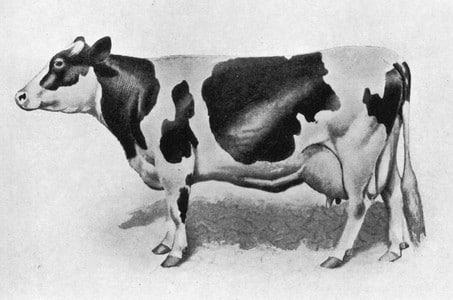
The first cow of any breed to produce over 1,200 lbs. butter in a year or to make a seven-day record above 35 lbs. butter (28 lbs. fat). Her record at eight years of age, completed in 1907:
Milk – Fat
7 days 651.7 – 28.18
30 days 2,873 – 110.83
365 days 27,432.5 – 998.26
This was the performance that shut the door on the heretofore popular seven and thirty-day tests, turning the tide in favour of yearly testing, dairymen now recognizing that the annual test was a more accurate measure of production talent than were the short-term tests.
During the course of Colantha 4th’s Johanna’s record, Gillett’s neighbours grew worried. The man was spending night and day with his cow. When a friend admonished him, “Gillett, you are going to kill yourself looking after that cow”, he replied, “If I do, I shall die happy.”
The new champion’s dam was Colantha 4th; her granddam was Colantha herself, the matriarch of one of the breed’s enduring families. Colantha 4th’s production of 24.49 lbs. butter and 513 lbs. milk won the first Association prize for the year 1899. Her sire was Aaggie Cornelia 5th’s Clothilde Imperial, mentioned earlier as one of the best sons of Clothilde 4th’s Imperial. Colantha 4th’s Johanna’s sire was Sir Johanna, a son of Johanna Rue 2d, a great-granddaughter of the Gillett foundation cow, Johanna 344 H.H.B.
The champion’s main genetic contribution came through her Sarcastic Lad son, Colantha Johanna Lad. Bred by Gillett, he was sold to J.H.D. Whitcomb of Massachusetts as a youngster. He was repurchased by Gillett after his dam had started her sensational record, then was sold to D.W. and F.F. Field, Dutchland Farms, Mass. for the then record price of $8,000.00. Colantha Johanna Lad spent the balance of his life in the Fields’ herds where he established a record that was equalled by very few bulls. The brightest jewel in his crown was Wisconsin Admiral Burke Lad (VG-GM), a high impact sire of the 1950’s (he and his sons, Pabst Roamer and Pabst Regal between them sired six All-American gets of sire between years 1947 and 1952). “Burke Lad” was a son of Bell Farm Rosalind who had two close crosses to Colantha Johanna Lad.
Susie Abbekerk Colantha (“White Susie”) was a granddaughter of Colantha Johanna Lad. Her son, Sir Romeo Fayne, when mated with Mildred Colantha, a sister to “White Susie”, delivered Sir Romeo Mildred Colantha, the Carnation herd sire whose son was Sir Romeo Mildred Colantha 6th, one of the foundation sires in the Colony Farms bloodline in British Columbia.

